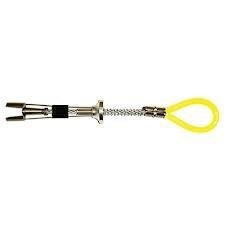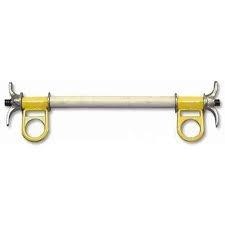Information
-
Conducted on
-
Location
WEEKLY ACCIDENT REVIEW
-
We reported no new injuries for the fourth week in a row!!! An entire month without an injury!!! Congratulations everyone, please continue to make safety one of the most important parts of your day!!!
WEEKLY TOPIC
-
PERSONAL FALL ARREST SYSTEMS
A personal fall arrest system consists of an anchorage, connectors, and a full-body harness that work together to stop a fall and to minimize the arrest force. Other parts of the system may include a lanyard, a deceleration device, and a lifeline. The personal fall arrest system if effective only if you know how all the components work together to stop a fall. Before you use a personal fall arrest system, you should know the following: -
How to select and install a secure anchorage
-
How to select and use connectors
-
How to put on and use a full body harness
-
How to correctly attach and use a lanyard
-
When a deceleration device is necessary
-
How to erect and use a lifeline
-
The correct procedure for using retractable devices
-
How to estimate fall distances
-
How to avoid swing falls
-
How to inspect and maintain system
-
How you will be promptly rescued if you fall
-
THE ANCHORAGE
An anchorage is a secure point of attachment for lifelines, lanyards, or deceleration devices. An anchorage for a personal fall arrest system must support at least 5,000 pounds. Anchorages that can't support 5,000 pounds must be designed and installed under the supervision of a qualified person and must be able to maintain a safety factor of at least two - twice the impact force of a worker free-falling six feet. If you don't know how much weight an anchorage will support, have a qualified person check it before you trust your life to it. -
-
JOBSITE SAFETY CHECKLIST
-
Select date
-
Job Name:
-
Job Number:
-
Checked By:
-
Signature:
1. RECORDKEEPING
-
a. Notices, Posters (5-in1, OSHA Notice, Payroll)
-
b. Emergency Contacts
-
c. OSHA 300 Log
2. PERSONAL PROTECTIVE EQUIPMENT
-
a. In use: Safety glasses, Hard hats, Work boots, Gloves
-
b. Face shields or goggles used for overhead work
-
c. Respirators available
-
d. Welding screens
3. FIRST AID KITS
-
a. Available in gang box and job site trailer
-
b. Stocked adequately with gloves, bandages, and antiseptics
-
c. CPR and First Aid trained personnel
-
d. Medical facility location and contact information communicated
4. SCAFFOLDS
-
a. Competent person certified
-
b. Scaffold grade planking
-
c. Fall protection
-
d. Clear of debris / trash
5. LADDERS
-
a. Free from defects with safety feet, blocked, cleated, or otherwise secured.
-
b. Straight ladders at 1:4 pitch
6. CYLINDERS
-
a. Capped, stored in an upright position
-
b. Oxygen / Acetylene properly separated
-
c. Empty gas cylinders marked
7. TOOLS / EQUIPMENT
-
a. Inspected to ensure safe operating condition
-
b. Hand tools free from defects
-
c. Unsafe / Unusable tools / equipment tagged "Do Not Use"
-
d. Tools / Equipment properly guarded
8. HOUSEKEEPING
-
a. Maintained
-
b. Aisles and exit ways clear with 24" clearance
-
c. Work areas uncluttered and debris removed
9. ELECTRICAL
-
a. Electrical equipment grounded
-
b. Tools double insulated
-
c. Cords in good condition
-
d. Electrical panels covered if energized
10. FALL PROTECTION
-
a. Guard rails, mid rails, toe boards
-
b. Fall restraint systems
-
c. Open sides floors or platforms equipped with standard railing
-
d. Openings (interior / perimeter) properly barricaded or covered
11. FIRE PREVENTION
-
a. Flammable and explosive materials stored safely
-
b. Adequate number of fire extinguishers available with tags and clips
-
c. Vehicles and mobile equipment provided with extinguishers
12. EXCAVATIONS
-
a. Over 4 ft shored, benched, or sloped as required
-
b. Steps or ladders at 25 ft intervals
-
c. Competent person on site
13. HAZARD COMMUNICATION
-
a. MSDS and Labels available
-
b. Employees briefed on HAZCOM
-
c. HAZCOM information poster posted
-
d. Employees familiar with MSDS books and their location
COMMENTS
-
Type comments here or use "Sign" function to write:
-
Write here:
PRE-TASK PLAN
-
Ensure a Pre-Task Plan is completed on paper or via the iJSA app.
OPPORTUNITY FOR IMPROVEMENT
-
Opportunities for improvement are always welcome! Use the MAD-Opportunity for Improvement template to submit your OFI.
CREW SIGNATURES
-
Add signature
-
Add signature
-
Add signature
-
Add signature
-
Add signature
-
Add signature
-
Add signature
-
Add signature
-
Add signature
-
Add signature















